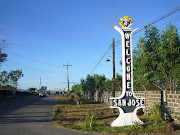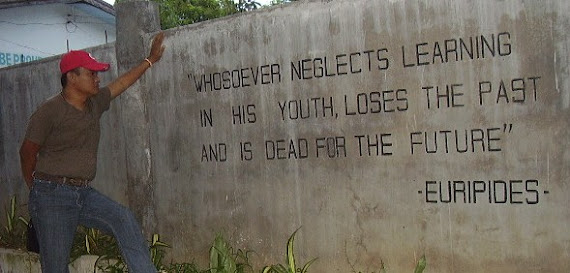Manny
Pacquiao’s boxing unifies Filipinos no doubt. Mangyans coming from the boondocks go
down to town proper to watch him fight. In San Jose, they troop to venues whenever
Pac-Man’s bouts were featured for free on screen.
Though
the Mangyans do not interact with the lowlanders, they stay quietly in one nook
of the area watching the bout unobtrusively. Councilor Ruben C. Aldaba is the Indigenous
People’s Mandatory Representative (IPMR) to the Sangguniang Bayan (SB) of
Sablayan in Occidental Mindoro, just like his people back in Pandalagan,
their indigenous cultural community, the November 4 meeting with the people’s
champ is to be treasured for such a gathering is one in a million.
The
Alangan Mangyan IPMR admires
Manny Pacquiao, the boxer. Senator Pacquiao asked Councilor Aldaba about the
road condition in the province and the 12-time world title winner in 8 weight
divisions was elated when the IP legislator told him that the road is now okay.
Pacquiao said something about his first professional fight in the acclaimed
Boxing Mecca of Occidental Mindoro, the Municipality of Sablayan. Aldaba
requested for a photo opportunity and Pacquaio agreed, therefore, the photo above.
Allow
me to take this opportunity to say something about the Alangan, the
ethno-linguistic group of Mangyans where Ruben Aldaba belongs. The Alangan
tribe is one of the 8 Mangyan ethnic groups. They live in the wide area
around Mt. Halcon and nearby areas. The sub-tribe occupies the northern part of Occidental and
Oriental Mindoro.
The
economic life of the Alangans is primarily based on the upland agriculture
or commonly known as the kaingin
system. Alangan Mangyans practice swidden farming, which consists of eleven stages.
Two of them are the firebreak-making (agait)
and the fallowing (agpagamas). A
firebreak is made so the fire will not go beyond the swidden site where the
vegetation is thoroughly dry and ready for burning. Two years after clearing,
cultivation of the swidden is normally stopped and the site is allowed to
revert back to forest (Quiaoit, 1997). Contrary to some misconceptions, the
indigenous and old Alangan way of doing the kaingin
is sustainable and ecologically friendly.
Mangyans
are also known for betel nut chewing (also known as ―nganga) (Leykamm, 1979). They chew the betel nut with great fervor from
morning to night because this makes them not to feel hungry. This is poverty as
experienced by our IPs.
As
a child, Manny Pacquiao’s family was so poor that he had to drop out of school
at age 14 and move to Manila in hopes of making money to support his mother and
five siblings. He spent time living on the streets, but eventually found his
way onto the Philippine national amateur boxing team. Within two years he won
his first two professional fights in Sablayan and the rest is history.
IPMR
Ruben and all his Alangan brethren know that Pacquiao is a sort of a national
hero, worth millions, and arguably the most famous Filipino in the world. With
regards to poverty the SenaPac has this to say: "Poverty does not make me angry," he said. "But it makes me feel bad inside, and I want to help. I want the
people of the Philippines to be happy, even if they have nothing. Even if they
can just have enough to eat food three times a day." Lest we forget too
that the Mangyans are the poorest of the poor among us, people of the island of
Mindoro. They eat only once or at times, two times a day.
Pacquiao, the boxer (not the politician) gave the Filipino people a reason to keep hoping, dreaming and working hard. That day, Pacquiao’s hardened knuckles and Aldaba’s calloused hand clasped…
-------
Photo : Jasper H. Francisco
References:







No comments:
Post a Comment